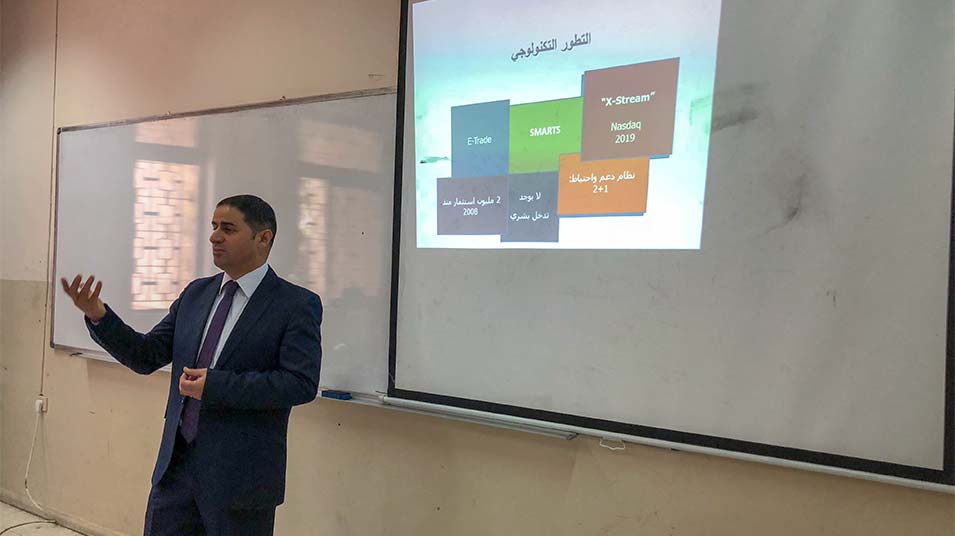Students delve into inner workings of the Palestine Exchange in finance lecture
The Department of Finance and Banking at Birzeit University organized a lecture on the Palestine Exchange, on Tuesday, July 17, 2018. The lecture, given by Mohammad Khraim, manager of public relations and investor education at the Palestine Exchange, detailed the exchange’s history and modes of operation.
Established in 1995 in Nablus as a private enterprise, the Palestine Exchange comprises 48 publicly-traded companies, with a trading volume of $3.7 billion, Khraim said to the attending students, adding that the exchange was reestablished as a publicly-traded firm – registered in the exchange itself – in 2010.
“The Palestine Exchange differs from those set up in neighboring countries in that it’s a private, publicly-listed company. In most Arab countries, the securities exchange is owned and operated by the government,” Khraim remarked.
Khraim mentioned that the exchange, overseen by the Palestine Capital Market Authority, has made great technological leaps in recent years. “We are in the process of acquiring the ‘X-Stream’ trading technology from Nasdaq, which is able to support 100,000 transactions per minute. We’ve also implemented Nasdaq’s SMARTS market surveillance technology that allows us to monitor transactions for fraud or financial manipulation,” he commented.
The Palestine Exchange, Khraim observed, is one of the most active exchanges regionally. He said the exchange was one of the first Arab securities exchanges to join the World Federation of Exchanges. The Palestine Exchange is also a member of the Arab Federation of Exchanges and the Organisation of Islamic Cooperation, he added.
Khraim also explained how companies get listed on the Palestine Exchange: “Private companies file applications to be incorporated into the securities exchange to have their stocks publicly traded. We, along with the Palestine Capital Market Authority, review the application and whether the company meets our requirements. Once everything clears out, the company is listed on the stock exchange, given a three-letter symbol, and has its stocks traded publicly.”
Publicly-traded companies, Khraim noted, must publicly disclose their financial statements and projections on a regular basis, along with any major changes in their projected revenues or losses and any alterations on their hierarchies or modes of operation.







